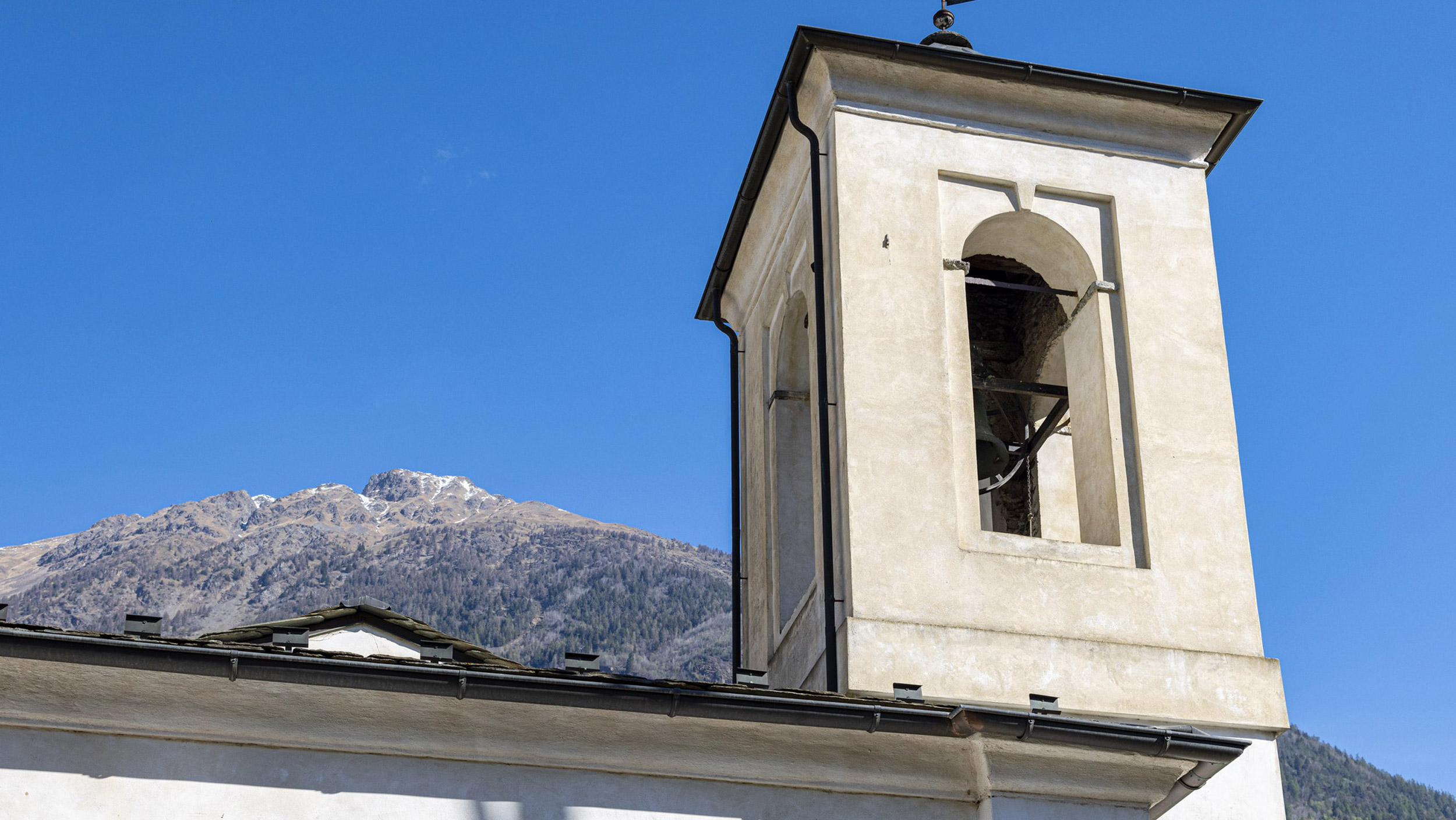Via Strencia, ingresso in Via XXV aprile 23030 Sernio (SO)
The alluvial fan of Sernio, deposited in an immense landslide in remote times, is etched with roads connecting the various fruit orchards and bustles in the fall with tractors laden with precious apples and other produce.
Vineyards on the northern side of the valley kept generations of winemakers busy until a huge landslide from Monte Masuccio in 1807 destroyed everything, leaving a lake. Walls, stairs, huts, and trails were rebuilt after the disaster, but in the end they were overwhelmed by the woods. A plan to recover the uncultivated lands was recently initiated to give new life to a landscape and its culture of great historical value.
The buildings of greatest historical and architectural interest are located in Contrada Piazza, below the parish church of Saints Cosmas and Damian: Torre Homodei and Palazzo Homodei, once belonging to the town’s most wealthy family.
For centuries, Via Strencia has connected the four contrade of Sernio. You will not be surprised to learn that its name means “narrow” in the local dialect as you walk between its high walls. It leads to the church of Our Lady of Snow, built in the early 17th century. The church originally had a wooden-truss roof but was later rebuilt with masonry ceiling vaults. While relatively unadorned, the precious painted and gilded wooden altarpiece is so finely and beautifully crafted that you will remain enchanted.
The Sernio altarpiece (1490-95) predates the church. In all probability it was previously in the parish church, which was renovated and remodeled in the 17th century with new furnishings and decorations. Carved by Giacomo Del Maino, it is one of the monumental Renaissance altarpieces that have made Valtellina a regular destination for art scholars.
Four statues of the patron saints of the local churches stand at the bottom: Saint Peter, Saints Cosmas and Damian, and Saint Gotthard. At the center, the main niche is occupied by the Virgin adoring the Child flanked by Saint Margaret and Saint Lucy. The upper element features the Annunciation and God the Father, tempera works of a refinement that should not be surprising. Indeed, the most illustrious woodworkers were usually paired with painters of equal prestige. The ornate rococo frame and lively angels carved by Mattias Peder of Tyrol were added in the 18th century with the intention of enlivening the piece and are now an integral part.
A portion of the lake created in 1807 still occupies the valley floor and is now regulated by a dam installed in the 1930s by the electrical company of Milan to drive the Stazzona hydroelectric plant. If you cross the river you will find the bicycle and pedestrian path leading to Tirano.







